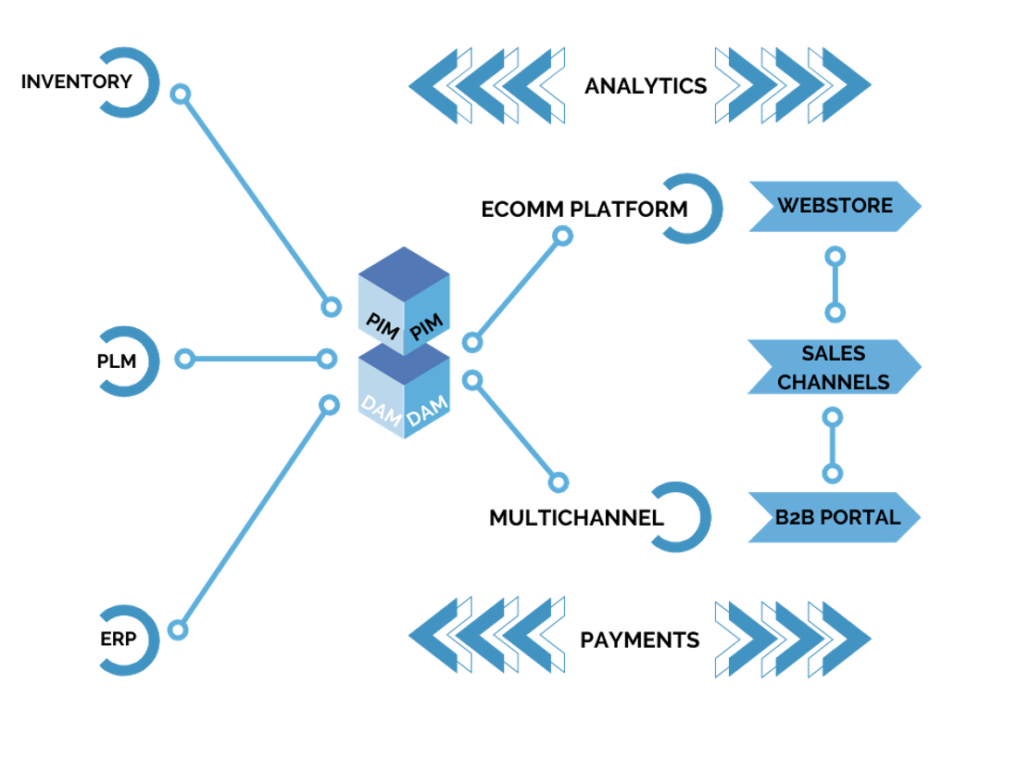A Practical Guide for Companies Navigating Declining Traffic
A drop in organic traffic can feel unsettling — especially if your team relies on steady inbound demand to drive sales. But declining traffic doesn’t...
Published: Dec 12, 2022 Updated: Dec 19, 2024
If you feel your company is on the cusp of expanding into new marketplaces but don’t have the resources to achieve your goals, it might be time to review your product information management system process. A PIM software enables you to seamlessly enter new marketplaces. Marketplace PIM technology improves your agility, allowing you to meet marketplace requirements for formatting and product specifications.
It also manages automated tasks, empowering your team to focus on marketing and stay competitive while offering high-quality products or services in new marketplaces.
Product Information Management (PIM) software is a tool that enables companies to centralize their product data, ensuring accuracy, consistency, and compliance with marketplace requirements. It acts as a single source of truth, streamlining processes for product data management and distribution. PIM software also improves the shopping experience for buyers and sellers by maintaining high-quality product content.


A marketplace PIM solution provides a centralized product information system, allowing for more efficient product management. It enables you to meet marketplace standards while reducing time to market, making expansion less daunting. As you grow, items with expanded copy, videos, and graphics may be launched fast, allowing your product catalog to acquire market share by always being first.
It is not only about speed. Centralizing your digital assets guarantees that your marketing and eCommerce teams can collaborate when expanding into new marketplaces. This alignment results in a smooth product experience for your customers.

It can be time-consuming to manually reformat and upload data for multiple marketplaces. With a marketplace PIM, you can simplify the process to connect with modern marketplaces. Automating the arrangement and upload of product attributes, tags, and content ensures that your listings meet standards and launch smoothly.
A PIM can record product categories, content formats, and other variations for each sales channel, allowing for smooth cross-platform integration. This saves time and work while improving the customer experience with consistent, high-quality product content.
You have to use special product name formats, including details such as capitalizing the first letter of each important word, ensuring buyers can identify the product by name alone and including the brand name or manufacturer. This step is key when expanding into new marketplaces.

They also want you to avoid “descriptive data or hyperbole.” Product descriptions are 350-character features and product specs that can’t include unnecessary capitalization and punctuation. They also frown on links that redirect customers to other sites. Descriptions must be informative with correct spelling and grammar.
You’ll also need to provide three bullet points with your top-selling highlights. You can choose categories and subcategories relevant to your products. You then have keywords separate from categories for common terms shoppers are likely to use to find your products. Each marketplace has its own version of these rules — an overwhelming prospect without a PIM that easily matches attributes to marketplace formats.
A product information management system makes this easier by synchronizing attributes with product categories and recommendations in real time. Whether you need to establish compliant product names, offer approved bullet points, or update descriptions, PIM software ensures that your listings satisfy the exact specifications for each sales channel.
If you’re not already convinced, here’s why a product information management PIM solution is critical to marketplace expansion.:

A PIM centralizes product data, removing old or inconsistent content. It enables streamlined uploads and updates, hence improving your product inventory across numerous markets.
With a PIM marketplace, you can optimize digital assets to enhance your product experience and create engaging content that resonates with buyers, improving conversions and overall shopping experience.
A PIM marketplace solution offers consistent, brand-approved product listings across all sales channels, reducing errors and increasing productivity when expanding into new marketplaces.
A strong PIM system enables high-quality, extended product descriptions, media, and metadata, making your product catalog more appealing. This leads to enhanced rankings, discoverability, and sales performance across marketplaces.
A marketplace PIM empowers your team with tools for automated workflows and real-time updates. By streamlining processes to manage product data, it reduces the time needed to launch new listings, ensuring you stay ahead in competitive marketplaces
PIM enables centralized management of product information and digital assets. As a result, it ensures that your brand’s identity is consistent across all platforms and marketplaces. Use approved, brand-appropriate material across all platforms to maintain trust and recognition.
Growing into new markets might be difficult, but PIM makes the process easier. Faster launches and better product catalogs are enabled by centralizing data, assuring consistency, and automating procedures. A PIM system is vital for efficiently scaling and remaining competitive in eCommerce.


